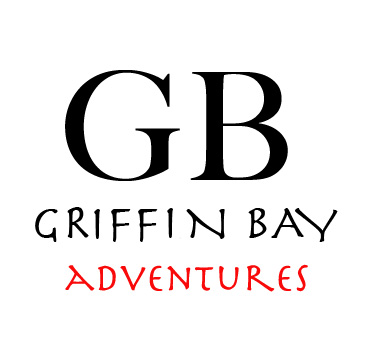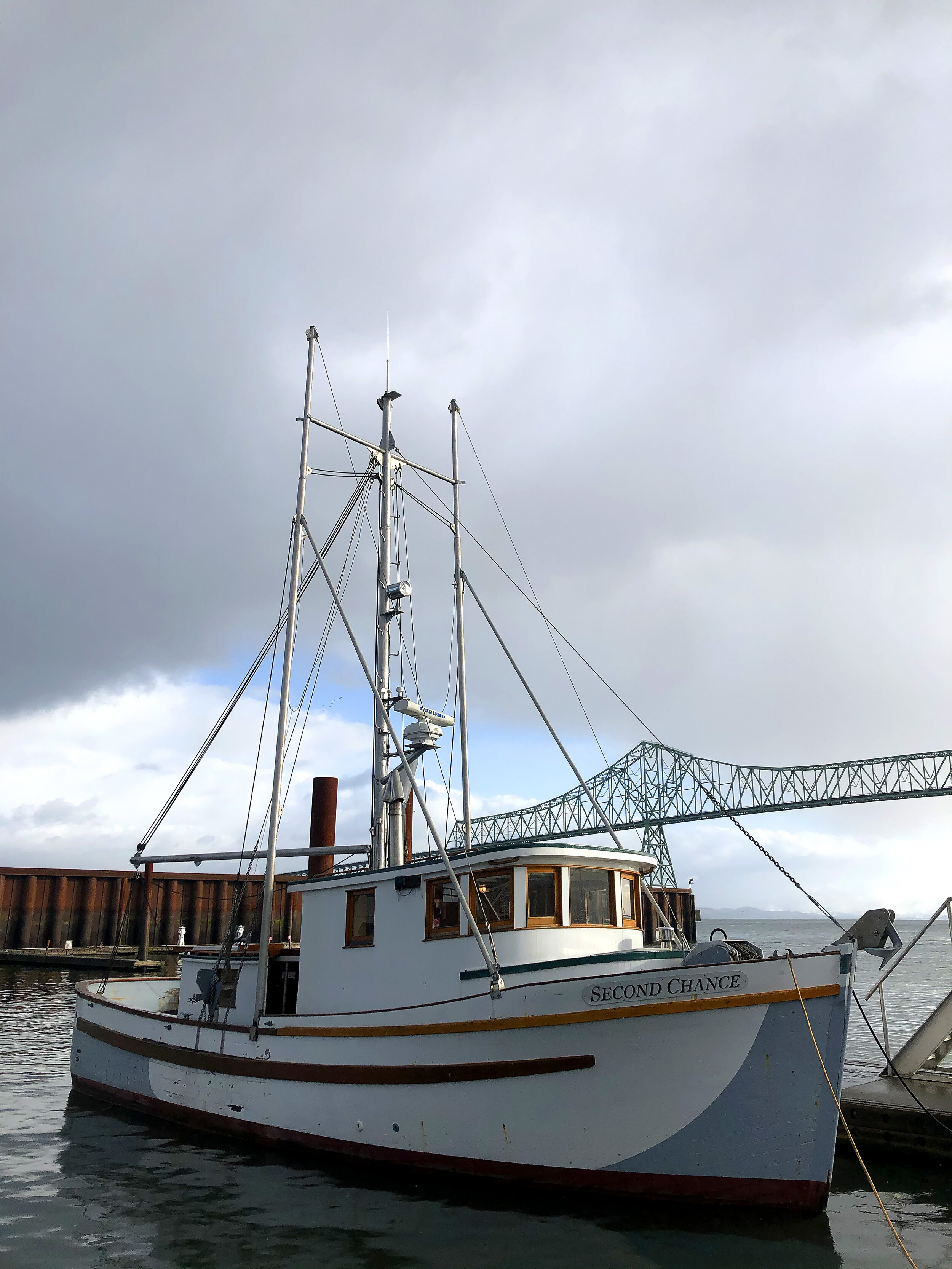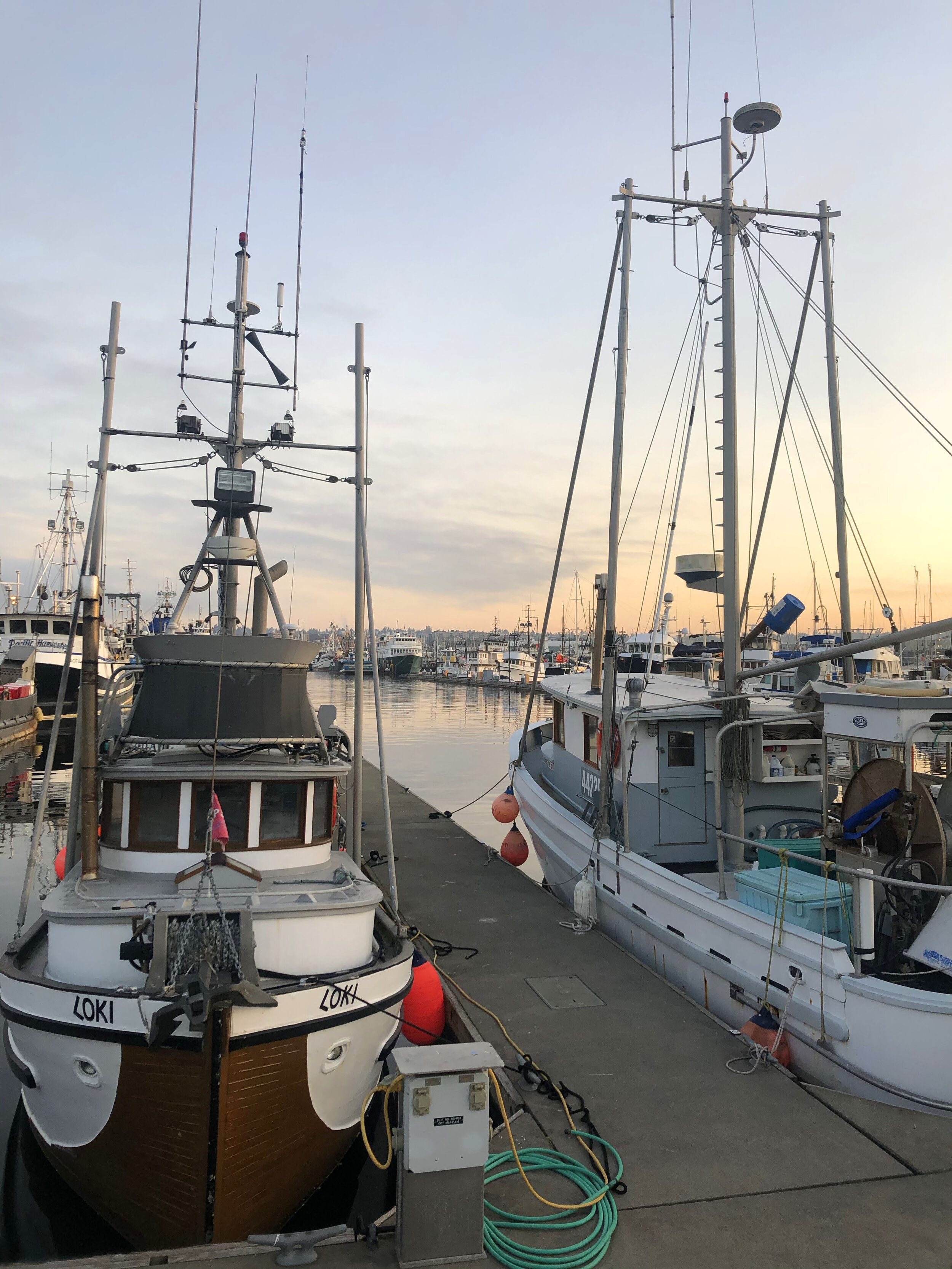The winter before last I delivered a Tayana 43 trawler from Anacortes to Portland. In February I was contacted by a former delivery customer to deliver another boat he was buying from Seattle to Oregon city. I asked what was wrong with the last boat I delivered for him and he said nothing but that it hadn't moved since and he thought this new boat would be a better fit.
The boat was a 1945 wood troller that had gone through what I was told was a 100,000 refit by a couple that after the refit had cruised to Alaska and back. The boat had been repowered and refastened below the waterline.
I had just delivered a Panda down to Seattle and the owner of the troller called saying he was worried that the pandemic would make the April delivery impossible. I texted a few people in Portland and Mark got back right away. Mark was a mechanic in the Vietnam War and knows both dangerous situations and wrenching on things. I rented a car and picked him up. We drove to the grocery store in Seattle and managed to buy some provisions where we were told we could only buy one gallon of water due to covid.
The boat looked a lot worse than the pictures, she had iron sickness pretty bad and had been sitting at Fisherman's Wharf where boats go to die in Seattle. The "Brokerage" the boat had been purchased through was a nonprofit that boat owners donate their boats to and write off taxes. “Second Half” had been sitting there for two years. Unfortunately, there was nowhere to sleep as the bed that the previous owners had used in the fish hold was gone so we were put up on a neighboring Tolly Craft from the 80s. Once on the boat with the food, we started going through all the boat's systems and found that the heater was also the boat's stove. It was a huge diesel cookstove that ran from a day tank the was mounted on the back of the cabin. This did not work.
Looking in the tank showed a lot of growth so we went about emptying the tank. After we emptied the tank and filled it back up we still couldn't get the stove to light. Turns out it was the ball value that had broken. The ball was stuck closed while the handle moved freely. We pumped all the dirty fuel out of it with an oil changing pump, fixed it and it lit. The next morning we cast off with spare filters and a good forecast. For those who don't know Seattle, the fishing fleet moor inside the Ballard Locks where they are repaired and painted before going back to the fishing grounds in Alaska. We locked down with another fishing boat pleased to be taking advantage of the commercial boat priority in the Ballard Locks. Without losing much time waiting for bridges and locks we were out and underway north. We were doing 6 knots at 1400 RPMs which is quite low revs for most boats but when I brought her up to 2000 she only went a little faster and was a lot louder. we settled in at 1700 and 6.5 knots.
We were hoping to make Neah Bay fuel dock before they closed to catch the Columbia River Bar on the next daylight flood but when we got there the store and fuel station were closed. Neah Bay felt like a ghost town. We laid some cushions on the cabin sole and got some sleep. the next day the fuel dock which shares a big fuel tank with the gas station and Quik E mart opened and we topped off with fuel and some snacks.
I've done this trip many times but never cut the corner of Cape Flattery. It was glassy calm we were in a shallow drafted boat and we could use the time saved by a short cut so we went through "Hole in the Wall" as it’s called by the locals that use the channel. There is a dangerous reef in the middle and you can easily see why people avoid the cut but the rock formations are some of the most beautiful in the area and cruising so close to Tatoosh Island with its iconic lighthouse and green grass was a highlight and worth more than the time it saved us. Now we were close to the shore and on the lookout for crab pots. With one engine (single screw) the big concern is fouling in a crab pot thereby losing all control and with a west wind you will end up on the rocky and remote shore of the Washington coast before long. Unfortunately for the fisherman, the crab season was terrible and fortunately for us this meant there were only a few rogue pots to dodge.
somewhere here I was doing an engine room check and I noticed that the water separator was FULL of water. Quickly I tried to crawl aft to where the Racors were mounted and a wave lurched the boat and I caught the side of my knee on the alternator fan. I remember later being wedged between the hot engine and a fuel tank feeling the blood seeping into my longjohns as I drained the water separator. The water and algae in the filter was the result of the low rollers rocking the boat and sloshing the sediment loose in the tanks. I told Mark we would have to check it regularly now.
We were approaching Destruction Island and it was when I was checking the stuffing box that I noticed something I should have noticed before we left. The wood ribs in the hold were rotten and now that we were underway in a rising seaway, water was coming in between the planking. The ribs were so bad that I imagined I could have kicked a plank out. I felt a piece of rib to see if it just looked bad, and it came off in my hand. At this point, the sea state rising and the barometer was falling. I weighed the options. It was about 50 miles back to a small harbor called LaPush but that would have meant we had to go into the now 3-foot seas. Another option was to head to the lee of Destruction Island where, as it turned out, my friends were going to be anchoring in the evening after they set some research buoys. This would have been okay if the conditions weren't changing for the worse. We may have been fine in the lee but eventually, we would have had to continue south.
I had instantly seen the worst-case scenario. First, we spring a plank, the water sprays on the battery bank* that was located in the hold in boxes but without covers and we lose power. This means our electric bilge pump and most importantly, our radio would not work*. This is a beautiful but remote piece of coastline, there are no houses and very spotty reception. We would have had to run the “washdown pump” off the engine. This wasn't a sure thing either because it was actuated electronically and without power, it may not have worked. We would have had to try and heel the boat with the stabilizer. This means lower the port arm and shift all the weight below to rise the plank out of the water, in addition, we would have had to stuff the sun awning into the hole or run it over the outside as a fathering sail. This would have only slowed the progress. If this didn't work plan C was to head for the beach. I admit for a moment I wondered if I could surf my safety-conscious crew in his exposer suit in through the worst of the surf.
To add to concerns I was taking a cup of water out of the Racor every 20 minutes.
Greys Harbor Bar was flooding when we got there so we headed in quite spent from dodging the pots. We had caught one right after dark restricted our view to a small spot that the mast light could illuminate. I had noticed the speed drop one knot and the steering feel strange. I looked to see if I could see the gear trailing behind but couldn't. 30 minutes later we must have lost it because the speed went back up and the steering recovered. It could have also caught on the keel coolers that run under the boat and that would explain why it didn’t foul the prop. As we approached the marina I asked Mark to put fenders out on port because of our right-hand prop. He was so tired he put them all on starboard. It was late and cold so I picked an easy spot at the fuel dock starboard side to and we got a few uncomfortable hours of sleep on the floor of the little cabin.
Before we laid down I asked Mark if he wanted to abandon ship, saying I could totally understand if he didn't want to carry on knowing what we knew then. He said no he wanted to continue and besides, that's why he brought his exposer suit. I didn't mention my plan C.
The next morning was calm as the light of the sunrise showed us the number of pot floats you find this close to a safe port. A watery minefield comes to mind and quite a few in the channel. I was glad that before we left Neah Bay I had climbed the mast and adjusted the spotlight to shine further ahead. It had controls in the bridge but only horizontal. Commercial boats have banks of very powerful sodium lights that help them see the pots. They are so bright that you cant see their running lights to see which direction they are heading. At a distance, they look like ufos surrounded by light bugs as swarms of sea birds fly into the beams of light.
The Columbia Bar was calm and pleasantly uneventful. The Racor was producing less water and the day cleared. The outlook that comes with having recently escaped a dicey situation unscathed shown in our smiles. The only sad thought was The Pig and Pancake was closed due to the virus. With the PnP closed and the sun shining we figured we would press on to Oregon City but not before grabbing some KFC and some more oil. The next fuel dock was Kathlamet a beautiful little river town right out of a storybook…or a Steven King novel. Mark flipped fenders out on Port and we met a very elderly man who after telling us to keep our distance said he used to fish boats like the one we were delivering back in the day. After a little time struggling with the pump he told us we could stay at the dock for free if we wanted to wait for the owner to come and figure out the pump. There were a number of yurts on the bank that created the tiny marina and I asked the old-timer if they were available for rent. The small cabin of the fishing boat was getting cramped. He said yes but the summer rate just started and now would set us back $50.
There was no power at the fuel dock and after measuring the water the bilge pump was pumping out of the boat I figured we were taking on water at a rate of a gallon a minute. 60 gallons an hour is more than I trusted the batteries on the boat to manage so we left the engine on idling. I also ran a line from the Port outrigger down to the dock and shifted a bunch of lead ingots in the hold to bring the leakest seam out of the water. I offered to stay aboard overnight to make sure there were no issues but as the yurt was freezing cold Mark was happy to sleep on the floor of the warm but cramped cabin and let me stretch out in the yurt.
The next day we fueled up and after a lot of thought, I called the owner and told him that I thought the best place to take the boat was actually behind us in Astoria or Ilwaco. Two places that work on boats just like Second Chance and specialize in old working boats. The owner agreed and told me. he would meet us at a yard in Astoria. I joined him as he headed into the shipyard manager’s office where he was told it would require a bond of $1000 a foot to haul the boat out. After some sputtering and shock, the boat owner said he had some thinking to do.
It was the last day before the Astoria car rental place was closing due to lockdown. Mark and I drove to PDX to where I dropped him before heading home.
*(one of which hadn't been strapped down prior to leaving Seattle and in another worst-case scenario could have slid across the floor of the sole and through the side of the boat)
*Commercial fishing boats often have auxiliary batteries up on the bridge for this reason.











